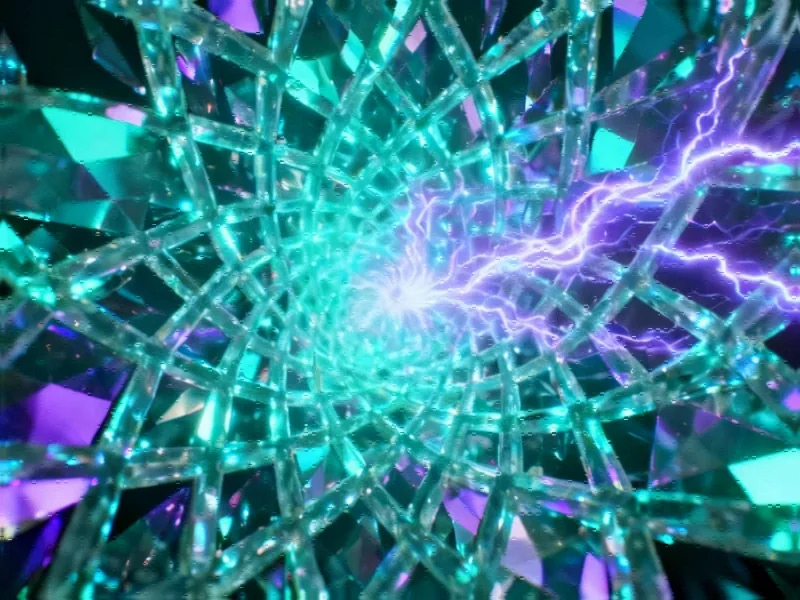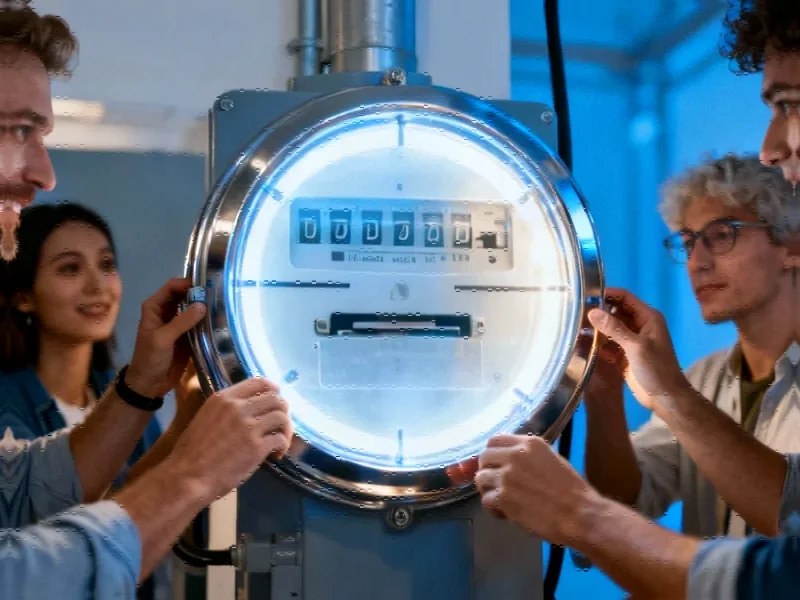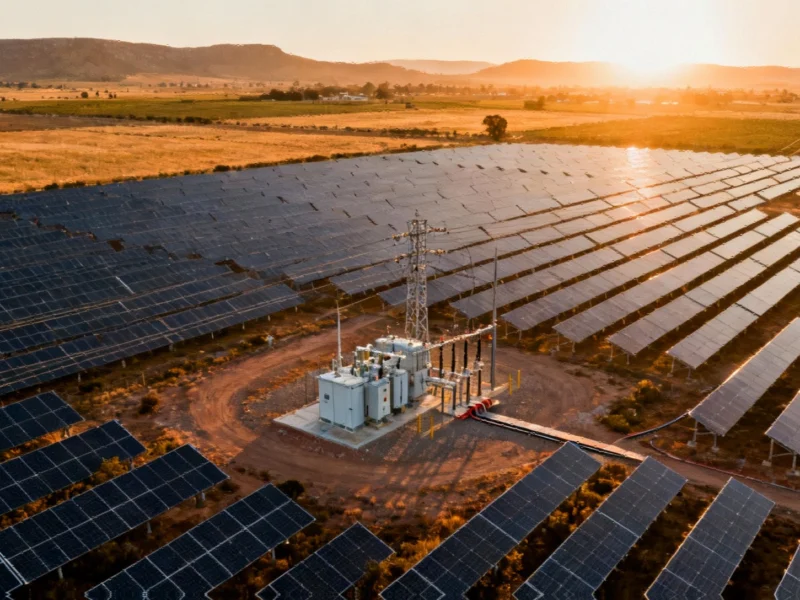The New Frontier in Energy Storage
Recent breakthroughs in materials science are challenging everything we thought we knew about ionic conduction. Researchers have discovered a revolutionary approach to creating solid-state electrolytes through what they term “solid dissolution” – where salts dissociate within van der Waals materials without requiring liquid solvents. This paradigm shift represents the most significant advancement in battery technology in decades, potentially solving the longstanding trade-off between safety and performance that has plagued energy storage systems.
The implications extend far beyond conventional lithium-ion batteries, opening pathways to safer, more energy-dense power sources for everything from electric vehicles to grid storage. What makes this discovery particularly remarkable is how it leverages fundamental chemical principles in entirely new ways, creating superionic conductors through solid-state processes that were previously thought impossible.
Innovative Synthesis Methods
The research team developed sophisticated synthesis protocols conducted in meticulously controlled environments. In argon-filled gloveboxes with oxygen and water levels below 0.1 ppm, scientists mixed solid solvents and solutes in precise stoichiometric ratios before mechanical processing using planetary ball-milling machines. The process involved carefully optimized parameters including rotation speeds, ball-to-material ratios, and temperature control, with cycles alternating between active milling and resting periods.
What distinguishes this approach from conventional methods is the diversity of materials successfully incorporated. The solid solvents included tantalum chloride, niobium chloride, titanium fluoride, and various other metal halides, while solutes spanned lithium, sodium, silver, and copper compounds. This broad compatibility suggests the mechanism may represent a universal principle rather than a material-specific phenomenon. The team’s meticulous approach to material synthesis and characterization sets a new standard for reproducibility in the field.
Advanced Analytical Validation
To confirm the structural and chemical properties of these novel materials, researchers employed an impressive array of characterization techniques. Laboratory and synchrotron-based X-ray diffraction provided detailed crystal structure information, while neutron powder diffraction offered complementary data about lighter elements. The team calculated pair distribution functions to understand local atomic arrangements, revealing the unique dissociation behavior responsible for the exceptional ionic conductivity.
Additional insights came from extended X-ray absorption fine structure (EXAFS) and X-ray absorption near edge structure (XANES) measurements, which detailed the local coordination environments around metal centers. X-ray photoelectron spectroscopy helped determine chemical states, while cryogenic transmission electron microscopy provided direct visualization of material structures at atomic resolution. These sophisticated analytical methods collectively built an unambiguous case for the solid dissolution mechanism.
Nuclear magnetic resonance spectroscopy, particularly lithium-7 NMR with magic-angle spinning, delivered crucial information about lithium ion mobility and local environments. Meanwhile, laser diffraction particle size analysis, differential scanning calorimetry, and scanning electron microscopy completed the comprehensive materials characterization suite. This multi-technique approach represents the gold standard in materials validation and ensures the reliability of the reported findings.
Exceptional Electrochemical Performance
The synthesized solid dissolution electrolytes demonstrated remarkable ionic conductivities, measured using electrochemical impedance spectroscopy across a wide temperature range from -55 to 55°C. The materials maintained stable performance over extended periods, addressing one of the key challenges in solid-state battery development. Linear sweep voltammetry confirmed excellent electrochemical stability windows, crucial for compatibility with high-voltage cathode materials.
When incorporated into all-solid-state battery configurations, these materials enabled impressive cycling performance. The cells featured carefully engineered multilayer structures with composite cathodes, SDE layers, sulfide solid electrolyte separators, and lithium-indium alloy anodes. Each component was optimized for interfacial compatibility and electrochemical performance, resulting in cells that could withstand rigorous testing protocols.
This breakthrough represents part of a broader wave of innovation in energy storage materials that is transforming multiple industries simultaneously. The convergence of materials science, electrochemistry, and manufacturing engineering is creating unprecedented opportunities for technological advancement.
Broader Technological Implications
The implications of this research extend well beyond battery technology. The fundamental principles of solid dissolution in van der Waals materials could influence numerous fields where ionic transport is crucial. As researchers continue to explore van der Waals heterostructures, we’re likely to see additional unexpected applications emerge.
Meanwhile, parallel developments in interface technology demonstrate how different fields of innovation often converge in surprising ways. The sophisticated material handling and characterization techniques developed for this battery research could potentially benefit other areas of materials science and engineering.
The progress in energy storage coincides with remarkable advancements in human-machine interfaces, suggesting we’re entering a period of accelerated technological convergence. As different domains of research inform and enhance each other, the pace of innovation appears to be increasing exponentially.
Future Research Directions
While the current results are impressive, numerous questions remain unanswered. Future research will need to explore the limits of this solid dissolution approach, including:
- Scaling up synthesis for commercial production
- Long-term stability under real-world operating conditions
- Compatibility with alternative anode materials
- Environmental impact and recycling considerations
- Cost-effectiveness compared to existing technologies
Interestingly, the interdisciplinary nature of this breakthrough highlights how solutions to complex challenges often emerge from unexpected places. Just as researchers are drawing inspiration from biological systems for other technological applications, the solid dissolution mechanism may inspire analogous approaches in different material systems.
Conclusion: A Paradigm Shift in Energy Storage
The discovery of universal superionic conduction via solid dissolution represents a fundamental advance in materials science with profound implications for energy storage technology. By demonstrating that salts can dissociate within solid solvents without liquid mediation, researchers have opened a new chapter in solid-state ionics. This work not only provides a pathway to safer, higher-performance batteries but also expands our understanding of ionic transport mechanisms more broadly.
As the technology develops, we can expect to see these materials enabling new applications and driving industry developments across multiple sectors. The convergence of this breakthrough with other related innovations suggests we’re on the cusp of transformative changes in how we store and utilize energy. The future of energy storage looks solid – in more ways than one.
This article aggregates information from publicly available sources. All trademarks and copyrights belong to their respective owners.
Note: Featured image is for illustrative purposes only and does not represent any specific product, service, or entity mentioned in this article.



